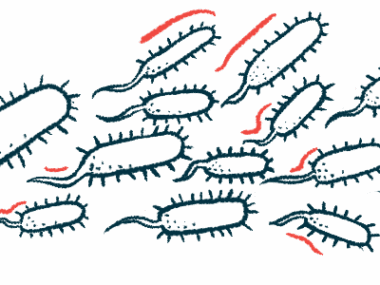High Immune Eosinophil Counts Seen in Rare Case of Angioedema
High levels may have been triggered by a medication for bipolar mood disorder
Written by |

A Japanese woman was diagnosed with a rare case of non-episodic angioedema associated with eosinophilia (NEAE), with remarkably high levels of immune eosinophil cells in her bloodstream, a recent case report describes.
Swelling in her legs and feet, and associated weight gain, were successfully treated with the anti-inflammatory medication prednisolone.
Researchers speculated that her high eosinophil levels were triggered by a medication she used to treat bipolar mood disorder.
They recommended that even if patients with rapid swelling have normal eosinophil counts, they should be re-checked to avoid missing early-stage NEAE.
The case study, “Non-episodic angioedema with eosinophilia with remarkably high blood eosinophil counts,” was published in the journal JAAD Case Reports.
Patients with NEAE typically experience one episode of persistent swelling
Angioedema with eosinophilia (AE) is a subtype of angioedema associated with elevated levels of eosinophils — a type of white blood cell normally responsible for fighting off parasites and certain infections.
AE is further classified as episodic angioedema with eosinophilia (EAE) or non-episodic NEAE. While both conditions are characterized by high eosinophil counts, swelling, and weight gain, EAE is marked by recurrent episodes, whereas NEAE patients typically experience a single episode of persistent swelling.
Moreover, while EAE has been reported primarily in western countries, NEAE occurs most often among young women in East Asian countries, including Japan and Korea.
This report described the case of a 37-year-old Japanese woman with NEAE who had a “remarkably high blood eosinophil count.”
When we see a patient suffering from angioedema without eosinophilia, [eosinophil count] should be checked again in 7 to 10 days to avoid missing early-stage NEAE
The woman visited a dermatology clinic due to a three-week history of swelling in her extremities, resulting in a weight gain of 5 kg (around 11 lbs). Swelling around her knees was accompanied by joint stiffness.
She had no personal or family history of hereditary angioedema or other allergic diseases, and did not start any new medications immediately before the swelling episode. She had been taking medication to treat bipolar mood disorder for five years.
Although blood tests revealed elevated white blood cell counts overall, eosinophils, in particular, were not examined. She was treated with an oral antihistamine on suspicion of allergy-related swelling, but after 10 days, she failed to respond and was referred to the hospital’s general medicine department for further investigation.
There were no signs of fever, hives, or parasitic infection. Still, her eosinophil counts were markedly high, at 35,780 cells per microliter (mcl) of blood, accounting for 88% of all white blood cells. For reference, eosinophils are typically found at a concentration of less than 500 cells per mcl of blood, representing less than 5% of all white blood cells.
She had higher-than-normal LDH levels, a sign of tissue damage, while her levels of C-reactive protein, a marker for inflammation, were in the normal range. Notably, she also had normal levels of immunoglobulin type M antibodies, which are elevated in EAE patients — a finding that distinguished EAE from NEAE.
All other blood tests were normal, and because there were no signs of organ damage, the team ruled out hypereosinophilic syndrome — a rare group of conditions associated with persistently high eosinophil levels with evidence of organ involvement. As a result, NEAE was suspected.
Prednisolone helped to normalize patient’s eosinophil levels
Physical examination of the lower limbs demonstrated symmetrical nonpitting edema, or swelling that does not indent when pressure is applied at different locations. A skin biopsy showed marked eosinophil influx in the skin and underlying fat layers, as well as in and around blood vessels.
Antihistamines and topical corticosteroids were not effective. However, after a week of receiving a moderate dose of prednisolone, the patient’s swelling eased, her body weight dropped, and her white blood cell count (5,680 cells per mcl of blood) and eosinophil levels normalized (80 cells per mcl of blood).
Prednisolone was gradually tapered off over four weeks, and she experienced no recurrent episodes of angioedema for two years.
The researchers noted that this patient was treated with oral lithium carbonate for her bipolar disorder, which can elevate levels of G-CSF, a protein thought to stimulate the production of some white blood cells, including eosinophils.
Although G-CSF levels were not examined in this patient, the team speculated that “oral lithium carbonate possibly contributed to substantial eosinophilia by increasing serum G-CSF level.”
“When we see a patient suffering from angioedema without eosinophilia, [eosinophil count] should be checked again in 7 to 10 days to avoid missing early-stage NEAE,” they wrote.







